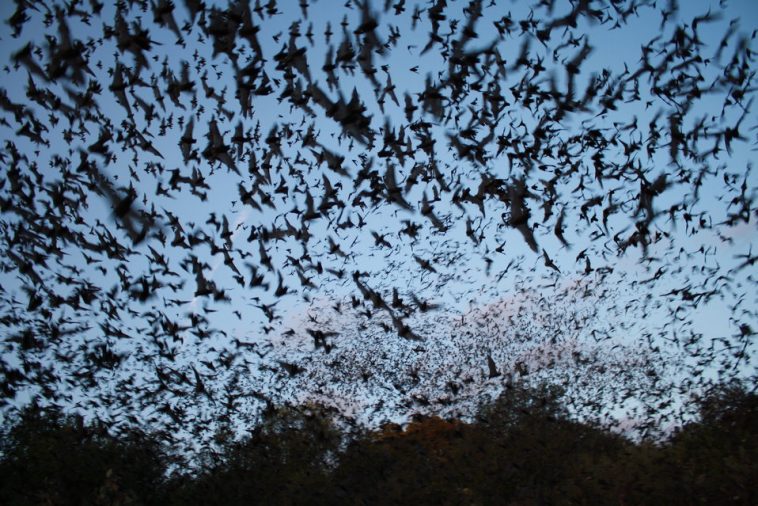
If you thought the fastest mammal on the planet was the cheetah, you’d (surprisingly) be mistaken. That title goes to the Mexican free-tailed bat.
Clocking in at just over 101 miles per hour, this tiny flying mammal is thought to have the fastest horizontal speed of any animal in existence. Not only that, these guys can fly as high as 10,000 feet. Some people call them the “jets” of the bat world.
These bats weigh less than half an ounce, but consume literal tons of pest insects every night. Some colonies are known to feast on as many as 250 tons of insects in one night. Farmers rely on them to control corn earworm moths and other insects harmful to their crops; the bats likely save them millions of dollars each year.
Thought to be one of the most abundant mammals in North America, the Mexican free-tailed bat can be found anywhere from the southern US, throughout Mexico, and down to South America.
The largest colony is thought to exist in Bracken Cave, just north of San Antonio, Texas. An estimated 15 to 20 million of the species roost here. The spot is a popular tourist destination in the summer months, as visitors get a front row seat to millions of bats emerging out of the cave each night to feed.

You’ll only find them there seasonally, though — these bats migrate to Mexico and Central America during the winter months.
Thankfully for farmers and bat enthusiasts alike, free-tailed bats have little to worry about in the way of threats.
While this bat holds the title for the fastest mammal, it is not the fastest animal; that distinction belongs to the peregrine falcon. Known as the fastest bird, and indeed, the fastest animal on the planet, the peregrine falcon is capable of reaching over 240 miles per hour during its missile-like high-speed dive, making it nearly two and a half times faster than the swift bat. Click here to watch this incredible creature in action.




